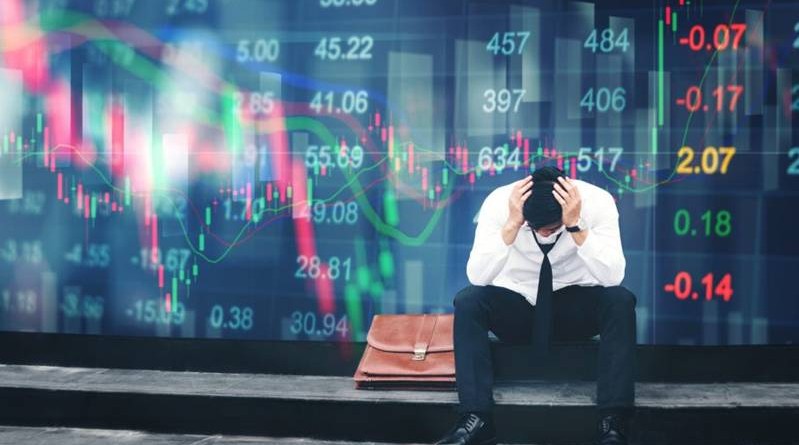The signs of a potential market crash are now appearing, asset manager warns
Despite a generally sunny economic outlook stemming from strong earnings, a global recovery and low unemployment levels in developed markets, trouble may be lurking around the corner – market crash, according to one asset manager.
That trouble is set to come in the form of a market crash that may be sooner rather than later, says Francesco Filia, the chief executive at Fasanara Capital who accurately predicted the dramatic market correction of early February.
“The signposts of a potential market crash are coming in with increasing hubris,” he said in a client note Monday.
Filia pointed to the increasing frequency of value-at-risk shocks, or swift market corrections, as an indication of fragility for global markets. The report cited as evidence the VIX volatility index spike in February, the Turkish lira’s dramatic drop in recent months, and Italy’s roller-coaster bond price moves, among other examples, as early warning signals for “system instability of the broader financial network.”
“If this view is right,” he said, “a critical transition and a moment of final rupture for global markets may then loom ahead.”
This may seem contradictory, given the “sound fundamentals” of earnings and growth that have allowed the markets to rebound from recent market shake-ups.
But the fund’s report noted the worst market drops in history were preceded by lower-than-average volatility, stronger-than-average earnings, positive GDP (gross domestic product) growth and bullish sentiment — visible in 1929, 1987, 2000 and 2007.
While the note’s warnings are ominous and contradict many other more rosy outlooks for the current bull market, the London-based fund was on point in calling February’s market correction weeks before it happened. Filia told CNBC in late January that stock valuations were in “bitcoin territory,” “totally disconnected from fundamentals,” and that markets were on the “edge of chaos.”
Roughly two weeks later, U.S. indexes dropped more than 10 percent and all major European indexes followed. The Dow plummeted more than 3,200 points in just two weeks, making a partial rebound later in the month.
‘Elephants in a china shop’
Some enduring red flags, Filia said, are in the form of politics and geopolitics — growing populism across Europe as well as Middle East and Asian tensions. But more than that he sees shrinking liquidity — central bank spending flows in reverse for the first time in a decade — as the “first real crash test” for momentum and volatility, as well as rising interest rates.
Historic debt levels likely pose another danger, as we’re now looking at the largest debt-to-GDP ratios for some of the major G-10 countries in decades. At the same time, we’re faced with some of the smallest savings rates across U.S. households in decades and “the worst debt metrics for corporates,” Filia said.
Still, Fasanara may be among the more bearish market watchers out there. Strategists at Credit Suisse and LPL Financial, among others, say this bull market has more room to go.
Chief Investment Officer at Hennion & Walsh, Kevin Mahn, told CNBC last month that rather than being driven by central bank accommodation, as before, today’s bull market is being carried by stronger fundamentals like economic expansion and earnings. This, he said, would continue to move stocks higher.
But Filia maintains his worrisome outlook — where some experts see promise, he sees pitfalls. And they represent more than one elephant in the room.
“More than a room, financial markets look like a china shop, given their fragility,” he said. “There are then several elephants in the china shop.”



